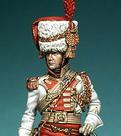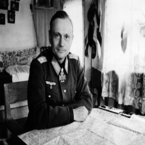chuckfourth
Posts: 222
Joined: 10/26/2011
Status: offline

|
Thank you for the advice John Ill try to get a copy of van credlin. In the mean time I would like to point you to this article from Gen. Lt. a.D, Max Bork a Branch Chief in the Transportation Division of the German Army General Staff. i.e. he is a primary source.
https://www.allworldwars.com/Comments-on-Russian-Roads-and-Higways-by-Max-Bork.html
This is his summary of the ability of the road network to support army group north.
"As a result of this planning and the measures taken the Germans succeeded in maintaining that part of the road net which was vital for their operations and in improving it sufficiently to meet all demands."
Meet all Demands, sounds to me like army group norths tanks should not be out of supply on turn 3?
There is also this,
"In 1941 European Russia did not have a highway net comparable to those in western European countries. The few roads which existed had only a limited capacity and apparently had not undergone any appreciable change in construction or lay-out during the past 100 year3, a condition due primarily to the relatively small demands of peacetime traffic. There were two types of roads:
a. the long, straight thoroughfares intended for commercial and military traffic, which usually followed the valleys of the larger rivers and connected cultural and industrial areas;
b. the unimproved roads which had developed through constant use of the same route connecting small settlements with nearby fields and forests,
In contrast to the former Baltic States, where paved roads were common, the roads in European Russia had paved or asphalt surfacing only in and near large cities and industrial centers"
So OK kudos to you. You are right about the paved roads but I would suggest the bitumen wasn't laid out in grids only straight line from factory to factory etc. so transport would improve the closer to a city you are. The other point I would make is this, I think you are assuming all roads to be 'type b' I think that within the first 3 weeks 'type a' roads would remain usable, after all they are specifically designed to carry "military traffic" and would run between all the major cities ie where you want them.
The quote also says that paved roads were "common" in the Baltic states so make of that what you will but that might go some way to explain the lack of supply shortages felt by army group north.
There is also a all weather paved highway between Minsk and Moscow.
The article also says this,
"Over limited distances (200 to 300 miles), however, truck transportation could temporarily assume the railroad's supply function."
I read this to mean that the supply ability of the Railhead is extended 20 to 30 hexes without penalty. So OK that isn't 40 hexes but its at a minimum twice what the game has at 10 hexes.
This reference also provides the dates the first German trains arrived in these cities. ie this is how far the rails had been repaired.
" 27 June - Kaunas (military railroad station)
28 June - Bajohren
6 July - Dvinsk (west bank of the Dvina)
9 July - Riga
10 July - Rezekne (shuttle traffic from Dvinsk and Riga)
11 July - Ostrov
13 July - Cherskaya (between Ostrov and Pskov)
17 July - Sebezh
24 July - Pskov"
Just looking at the first week Army group north had fixed 10 Railway hexes!!!!!!!!! In the game they can only fix 4, the Games army group north rail repair rate for the first week is not even half what was achieved historically. Bajohren is at about Priekules location.
Dvinsk is your Daugavpils they reached this in the next week that means they fixed a further 16 rail hexes in a second week!!!!!!!!!!!
In week 3 they had got to Riga, Rezekne, Ostrov and Cherskaya thats 35 Rail hexes fixed in total by week three. You allow just 12, so your Rail repair rate is at best, one third the historical amount. Army group north should be given 3 FBD that can piggyback.
Though trains were travelling along these lines, full capacity had to wait until the bridges had been brought back into full serviceability. Here's the bridge repair dates.
"Location of railroad bridges Date restored (fully)
Kaunas 17 July 1941
Taurage 29 June 1941
Riga 12 July 1941
Jelgava 22 July 1941
near Jekabpils 23 July 1941
near Rezekne 15 July 1941
near Cesis 24 July 1941
neer Pskov 27 July 1941
near Petseri 24 July 1941" (Games Pechory)
So OK this slows things down a bit but overall by the 5th week these bridges are all fully fixed and the rail is repaired at least as far as Sebezh towards Smolensk, up to Pskov and past Riga to Cesis Its all completely fixed and that is 69 rail hexes repaired, historically by week 5. If you add in the line between Riga and Rezekne that's another 13 rail hexes they fixed by week 5, 82 Rail hexes!!!!!! that's a conservative estimate, they worked on the trunk lines as well. Your game allows them just 20 by week 5 so your game gives them one quarter the rail repair capacity they actually had.
It would not surprise me if Army group Centre and South had similar rail repair abilities.
This also needs to be considered,
"Shipping on the Niemen River as far up as Kaunas relieved the burden on the railroads by some 18,000 tons between 28 June (three days after the Germans occupied the area) and 19 July."
Here is another quote from this article
"Rail traffic was not disrupted at any time in the area of Army Group South since there were no partisans there." this is because the ethic minorities in these areas had been handsomely monstered by the "Russians" forever.
I think maybe your game has partisan activity in Army group souths area, perhaps that should be rethought?
Quotes about supply shortages in September or August are irrelevant to what happens in June July, even a quote about supply shortage in June would be irrelevant because Stalin resisted, that uses up much more German supply than if he withdrew, as the game does. We are comparing apples and oranges here.
Why wasn't Stalin as smart as some of the other posters here and withdraw all his troops deep into Russia and start fighting then?
Because an army fighting forward uses a lot more supply than an Army moving forward unopposed. Much much much less. Ammunition is heavy and they don't need to fire a single shot, They don't have to do a single fuel sapping manoeuvre off road, they get a good nights sleep. They arrive fresh on the heals of the enemy ready to go. That is why references about supply shortages from September or August are irrelevant it is a different situation, at that time there is constant heavy fighting, the weather is steadily worsening and manoeuvring about in difficult terrain mandatory.
In the game even though the Russian withdraws and the German is just following up, the Germans supply is so unrealistically restricted its the same as though he had had to fight all the way forward against an opponent 4 times as strong.
Please note that according to Gen. Lt. a.D, Max Bork army group north did not suffer supply shortages even though they DID have to fight forward. The Germans should operate under the historic supply constraints, rail repair rate 4x current, road supply penalised after 30 hexes not 10. I choose 30 rather than 20 because it is the good season 20 would be used in mud times.
I am not asking for dropping all supply constraints just matching them to the first hand, specific, authentic information contained in the reference supplied.
Stalin knew if he withdrew he would have the Germans right there in his face as soon as he stopped, fresh and ready to go and a lot closer to Moscow. Because all they had to do was drive along the roads.
28 miles is my mistake I was working on 10 klm hexes and a round trip ie range halved I see now they are 10 Mile hexes.
JoelMar please take the time to read what I said and digest it before you reply or maybe just be wise, I'm finding your jeering tiresome. I already tried the logistic thing and posted the result but here it is again for your benefit. In week three after moving the max amount an armoured unit will have supply of about 4 with Logistics level at 400 it becomes about 10, not a difference to bother with.
I am sorry John I don't understand this
" Just as we see with modern military operations and fuel delivery strikes the capacity of the system is of little importance compared to throughput which is governed by truck capacity (numbers, size and distance). Cut throughput and fuel runs out very quickly. "
can you rephrase it please.
As for petrol station capacity don't forget the Germans created their own stations at the appropriate junctures.
|
 Printable Version
Printable Version


















 New Messages
New Messages No New Messages
No New Messages Hot Topic w/ New Messages
Hot Topic w/ New Messages Hot Topic w/o New Messages
Hot Topic w/o New Messages Locked w/ New Messages
Locked w/ New Messages Locked w/o New Messages
Locked w/o New Messages Post New Thread
Post New Thread